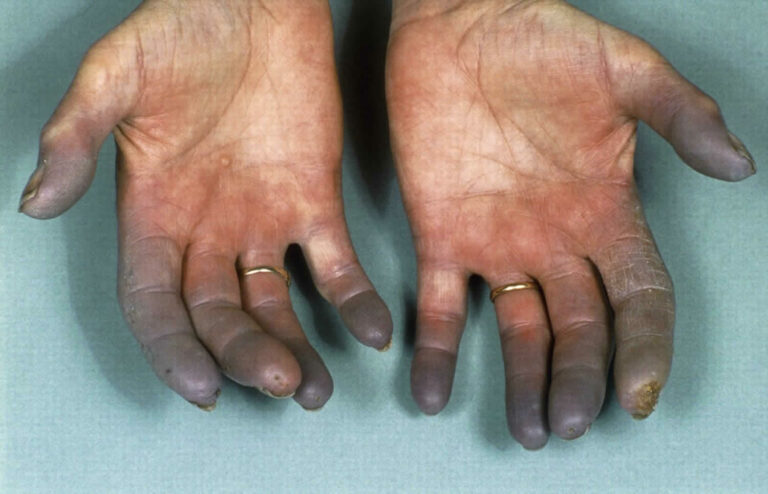Wilson’s Disease; Understanding the Disease
Author: Giselle Robel
Giselle Robel
Category: Health
Wilson's disease, also known as hepatolenticular degeneration and progressive lenticular degeneration, is a rare genetic disorder that causes copper poisoning in the body.
Wilson’s disease is a rare inherited disorder that causes copper to accumulate in your liver, brain, and other vital organs. Most people with Wilson’s disease are diagnosed between the ages of 5 and 35, but it can affect younger and older people, as well.
In a healthy body, the liver filters out excess copper and releases it through urine. With Wilson's disease, the liver cannot remove the extra copper properly. The extra copper then builds up in organs such as the brain, liver, and eyes.
Copper plays a key role in the development of healthy nerves, bones, collagen, and skin pigment melanin. Normally, copper is absorbed from your food, and excess is excreted through a substance produced in your liver (bile).
But in people with Wilson’s disease, copper isn’t eliminated properly and instead accumulates, possibly to a life-threatening level. When diagnosed early, Wilson’s disease is treatable, and many people with the disorder live normal lives.
Early diagnosis is crucial for stopping the progression of Wilson's disease. Treatment may involve taking medication or getting a liver transplant. Delaying or not receiving treatment can cause liver failure, brain damage, or other life-threatening conditions.
The signs and symptoms of Wilson's disease
The signs and symptoms of Wilson's disease vary widely, depending on which organ is affected. They can be mistaken for other diseases or conditions. Wilson's disease can only be detected by a doctor and through diagnostic testing.
Liver-related
The following symptoms may indicate copper accumulation in the liver:
- weakness
- feeling tired
- weight loss
- nausea
- vomiting
- loss of appetite
- itching
- jaundice, or yellowing of the skin
- edema, or the swelling of legs and abdomen
- pain or bloating in the abdomen
- spider angiomas, or visible branch-like blood vessels on the skin
- muscle cramps
Many of these symptoms, such as jaundice and edema, are the same for other conditions like liver and kidney failure. Your doctor will conduct multiple tests before confirming a diagnosis of Wilson's disease.
Neurological
Copper accumulation in the brain can cause symptoms such as:
- memory, speech, or vision impairment
- abnormal walking
- migraines
- drooling
- insomnia
- clumsiness with hands
- personality changes
- changes in mood
- depression
- problems in school
In the advanced stages, these symptoms may include muscle spasms, seizures, and muscle pain during movement.
Kayser-Fleischer rings and sunflower cataract
Your doctor will also check for Kayser-Fleischer (K-F) rings and sunflower cataracts in the eyes. K-F rings are abnormal golden-brown discolorations in the eyes that are caused by deposits of excess copper. K-F rings show up in about 97 percent of people with Wilson's disease.
Sunflower cataracts show up in 1 out of 5 people with Wilson's disease. This is a distinctive multicolored center with spokes that radiate outward.
Other symptoms
The buildup of copper in other organs can cause:
- bluish discoloration in the nails
- kidney stones
- premature osteoporosis, or lack of bone density
- arthritis
- menstrual irregularities
- low blood pressure
Cause

A mutation in the ATP7B gene, which codes for copper transportation, causes Wilson's disease. You must inherit the gene from both parents in order to have Wilson's disease. This can mean that one of your parents has the condition or carries the gene.
Wilson’s disease is inherited as an autosomal recessive trait, which means that to develop the disease you must inherit one copy of the defective gene from each parent. If you receive only one abnormal gene, you won’t become ill yourself, but you’re a carrier and can pass the gene to your children.
Diagnose
Wilson's disease may be difficult for doctors to initially diagnose. The symptoms are similar to other health issues like heavy metal poisoning, hepatitis C, and cerebral palsy.
Sometimes your doctor will be able to rule out Wilson's disease once neurological symptoms occur and there's no K-F ring visible. But this isn't always the case for people with liver-specific symptoms or no other symptoms.
A doctor will ask about your symptoms and ask for your family's medical history. They'll also use a variety of tests to look for damage caused by copper accumulations.
Physical exam
During your physical, your doctor will:
- examine your body
- listen for sounds in the abdomen
- check your eyes under a bright light for K-F rings or sunflower cataracts
- tests your motor and memory skills
Lab tests
For blood tests, your doctor will draw samples and have them analyzed at a lab to check for:
- abnormalities in your liver enzymes
- copper levels in the blood
- lower levels of ceruloplasmin, a protein that carries copper through the blood
- a mutated gene, also called genetic testing
- low blood sugar
Your doctor may also ask you to collect your urine for 24 hours to look for copper accumulation.
Imaging tests
Magnetic resonance imaging (MRI) and computerized tomography (CT) scans may help show any brain abnormalities, especially if you have neurological symptoms. These findings can't diagnose the condition, but they can help determine a diagnosis or how advanced the condition is.
Your doctor will look for weak brain stem signals and damage to the brain and liver.
Liver biopsy
Your doctor may suggest a liver biopsy to look for signs of damage and high levels of copper. If you agree to this procedure, you may need to stop taking certain medications and fast for eight hours beforehand.
Your doctor will apply a local anesthetic before inserting a needle to take a tissue sample. You may ask for sedatives and pain medication if needed. Before going home, you'll need to lie on your side for two hours and wait for an additional two to four hours.
If your doctor finds the presence of Wilson's disease, they may recommend your siblings take a genetic test too. It can help identify whether you or your other family members are at risk for passing on Wilson's disease.
You may also want to consider future screening for your newborn if you're pregnant and have Wilson's disease.
How is Wilson's disease treated?
Successful treatment of Wilson's disease depends upon timing more than medication. Treatment often happens in three stages and should last a lifetime. If a person stops taking the medications, copper can build back up again.
First stage
The first treatment is to remove excess copper from your body through chelating therapy. Chelating agents include drugs like d-penicillamine and trientine or Syprine. These drugs will remove the extra copper from your organs and release it into the bloodstream. Your kidneys will then filter the copper into the urine.
Trientine has fewer reported side effects than d-penicillamine. Potential side effects d-penicillamine include:
- fever
- rash
- kidney issues
- bone marrow issues
Your doctor will provide lower dosages of chelating drugs if you're pregnant, as they can cause birth defects.
Second stage
The goal of the second stage is to maintain normal levels of copper after removal. Your doctor will prescribe zinc or tetrathiomolybdate if you've finished the first treatment or show no symptoms but have Wilson's disease.
Zinc taken orally as salts or acetate (Galzin) keeps the body from absorbing copper from foods. You may have a slight stomach upset from taking zinc. Children with Wilson's disease, but no symptoms may want to take zinc to prevent the condition from worsening or slow its progress.
Third stage
After the symptoms improve and your copper levels are normal, you'll want to focus on long-term maintenance therapy. This includes continuing zinc or chelating therapy and regularly monitoring your copper levels.
You can also manage your copper levels by avoiding foods with high levels, such as:
- dried fruit
- liver
- mushrooms
- nuts
- shellfish
- chocolate
- multivitamins
You might want to check your water levels at home, too. There may be extra copper in your water if your home has copper pipes.
Medications can take anywhere from four to six months to work in a person who is experiencing symptoms. If a person doesn't respond to these treatments, they may require a liver transplant. A successful liver transplant can cure Wilson's disease. The success rate for liver transplants is 85 percent after one year.
Risk factors
You can be at increased risk of Wilson’s disease if your parents or siblings have the condition. Ask your doctor whether you should undergo genetic testing to find out if you have Wilson’s disease. Diagnosing the condition as early as possible dramatically increases the chances of successful treatment.
Complications
Untreated, Wilson’s disease can be fatal. Serious complications include

- Scarring of the liver (cirrhosis). As liver cells try to make repairs to damage done by excess copper, scar tissue forms in the liver, making it more difficult for the liver to function.
- Liver failure. This can occur suddenly (acute liver failure), or it can develop slowly over years. A liver transplant might be a treatment option.
- Persistent neurological problems. Tremors, involuntary muscle movements, clumsy gait and speech difficulties usually improve with treatment for Wilson’s disease. However, some people have persistent neurological difficulty despite treatment.
- Kidney problems. Wilson’s disease can damage the kidneys, leading to problems such as kidney stones and an abnormal number of amino acids excreted in the urine.
- Psychological problems. These might include personality changes, depression, irritability, bipolar disorder or psychosis.
- Blood problems. These might include destruction of red blood cells (hemolysis) leading to anemia and jaundice.













